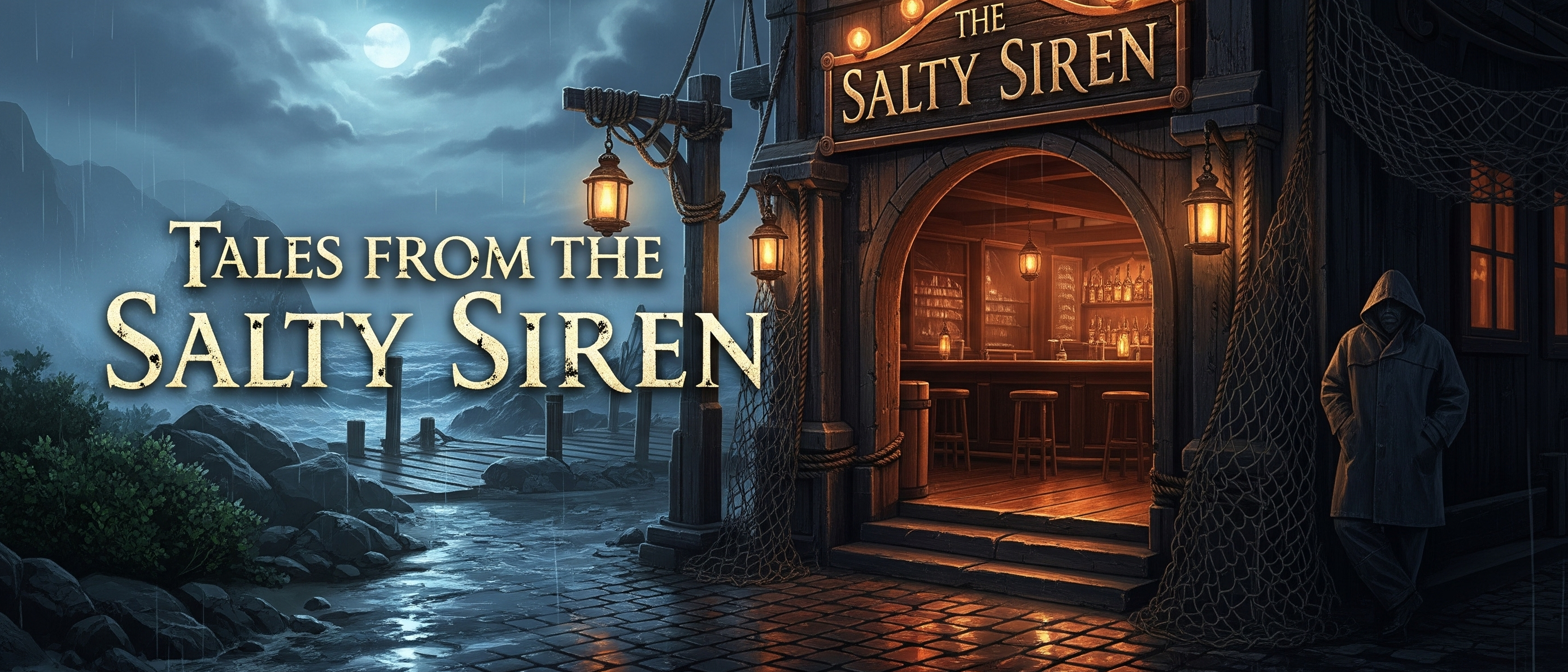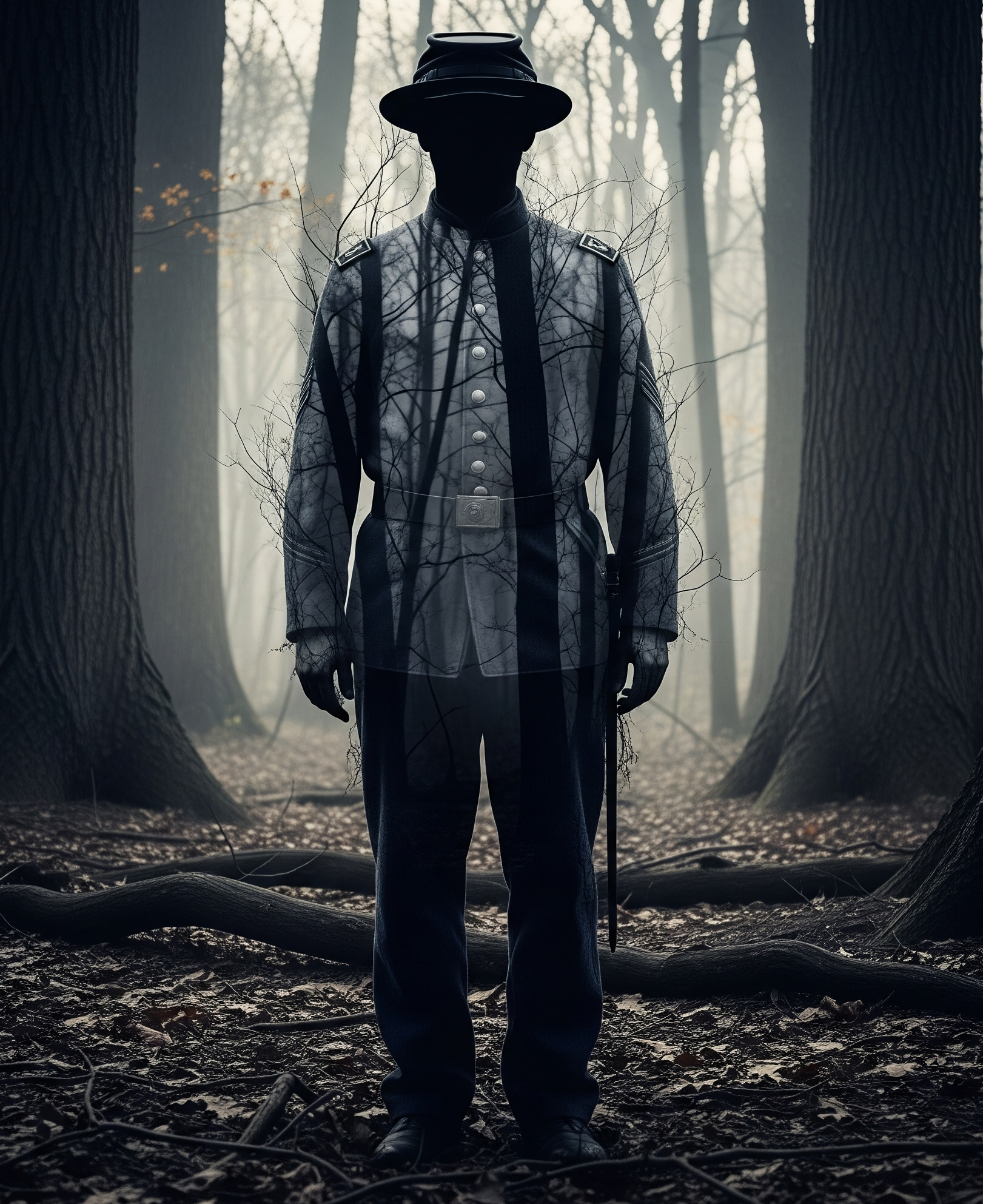The Shadow Phantom
The year 1889 clung to the Pacific Northwest like the persistent mists that rolled in from the sea, shrouding the port town of Shadow Falls in a perpetual twilight. It was a place of weathered docks, creaking ships, and the scent of brine and pine, a town where life moved at the deliberate pace of the tides.
Until he appeared.
It began subtly, a fleeting glimpse at the edge of the timberline as dusk bled into night. Old Man Hemlock, known more for his tall tales than his keen eyesight, was the first to speak of it.
"A man, tall and thin, cloaked in shadow, walking where no man walks." His words were met with chuckles and a dismissive wave of a calloused hand. But then, others saw him.
A young fisherwoman, tending her nets by the river's bend, swore she saw a figure silhouetted against the dying light, its form indistinct yet undeniably human.
A lumberjack, returning late from the mill, stumbled upon the figure near the old logging road – a man, he insisted, dressed in the tattered blue of a Union soldier's uniform, his face obscured by the deepening gloom.
The descriptions, though varied in detail, converged on one chilling point: the figure was always seen at dusk, always on the outskirts, and always, unnervingly, just out of reach.
Attempts to approach it proved futile. Those who tried reported a strange sensation, a sudden chill in the air, a disorientation that made their steps falter, as if an invisible barrier stood between them and the spectral visitor.
One brave soul, Silas Croft, a former Union soldier himself, swore the figure simply dissolved into the mist when he pressed too close, leaving nothing but the lingering scent of damp earth and something indefinably old.
Fear, a cold, creeping vine, began to twine itself around Shadow Falls. Children were hurried indoors as twilight approached. Women clutched their shawls tighter, their eyes darting towards the darkening woods. Men, usually boisterous and unafraid, spoke in hushed tones of ghosts and unfinished business. Was it a lost soldier, forever wandering the wilderness, unable to find peace? A harbinger of ill fortune? The town preacher, Reverend Blackwell, spoke of spirits trapped between worlds, urging prayer and vigilance.
The Shadow Phantom, as it came to be known, became an unsettling fixture of their lives. For several months, it appeared sporadically – a dark sentinel on the bluffs overlooking the harbor, a silent observer by the old cemetery gates, a fleeting shadow among the ancient redwoods. Each sighting sent a fresh ripple of unease through the community, a constant reminder of the unseen and the unexplained.
Then, as abruptly as the Shadow Phantom had arrived, it vanished. The spring rains came, washing away the last vestiges of winter, and with them, the shadowy figure. Days turned into weeks, weeks into months, and the phantom of Shadow Falls was no more. The town slowly exhaled, the collective tension easing like a taut rope released. Life resumed its rhythm, the mists still rolled in, and the ships still sailed.
Yet, even years later, as the sun dipped below the horizon and the first tendrils of fog crept inland, a subtle hush would fall over Shadow Falls. An unspoken memory, a shared glance towards the darkening outskirts, a quiet acknowledgment of the tall, shadowy figure who had once walked among them, a silent testament to the mysteries that still lingered in the wild, untamed corners of the Pacific Northwest.




Comments